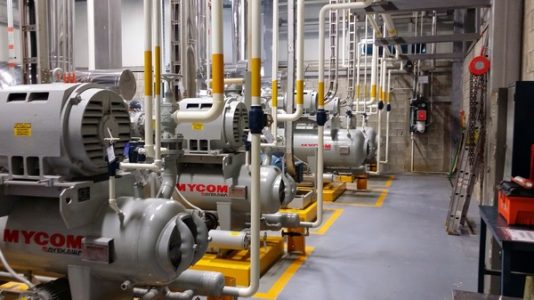RAGAGEP: Historical Variants and the Importance of IIAR Standards | Part 3: The IIAR’s Vision for the Future

Uriah Donaldson, OHST, presented a technical paper at the 2019 RETA National Conference and 2021 IIAR National Conference titled RAGAGEP: Historical Variants and the Importance of IIAR Standards.
This is the third post in a series of blogs which include excerpts from his technical paper.
The IIAR’s Vision for the Future
Over the last several decades, there have been a myriad of published documents which could legitimately be considered RAGAGEP under OSHA’s four examples. This has understandably led to much confusion in deciding which requirements, from which documents, from which publication years apply to a given facility. More frustrating still, however, is not only has there been a lack of clarity in the applicability of these documents at the end user level, but this confusion has been exacerbated by the inconsistent enforcement of the regulatory community. Even though OSHA’s standard interpretation states that the “employers select the RAGAGEP they apply in their covered process” experience teaches that an unspoken hierarchy does exist and that if an employer had not explicitly selected a particular RAGAGEP document to follow, enforcement could still ensue.
Possibly the most common example of this is the issuing of citations and violations based on guidelines published by the International Institute of Ammonia Refrigeration (IIAR) in the 1990s, known as the IIAR Bulletins. These bulletins were written with the clear and unmistakable intent of being general guidelines, and not documents which would carry the same weight as ANSI approved standards or codes. In fact, each bulletin declares on its first page under a large title “NOTICE” that “this publication is intended to be voluntary and not binding.”
Recognizing its bulletins were being used in ways unfaithful to the original authorial intent, along with the general need for simplification in answering the question, “what qualifies as RAGAGEP?” IIAR set out to develop a suite of ANSI approved standards which would cover every aspect of ammonia refrigeration systems from cradle to grave. Building upon its historically published ANSI/IIAR 2 Equipment, Design, Installation of Ammonia Mechanical Refrigerating Systems, IIAR has worked since the mid-2000s to develop nine standards. At the time of this paper’s publication, all nine standards have been published and are in circulation. A basic summary and major revision years for each standard are as follows:
- IIAR 1 – Definitions and Terminology (2012, 2017)
- IIAR 2 – Design (1974, 1984, 1999, 2008, 2014, 2014 Addendum A-2019)
- IIAR 3 – Valves (2005, 2012, 2017)
- IIAR 4 – Installation (2015, 2020)
- IIAR 5 – Startup (2013, 2019)
- IIAR 6 – Inspection, Testing, and Maintenance (2019)
- IIAR 7 – Operating Procedures (2013, 2019)
- IIAR 8 – Decommissioning (2015, 2020)
- IIAR 9 – Minimum System Safety Requirements for Existing Systems (2020)
Beyond simply adding new RAGAGEP standards to the already overcrowded shelf, IIAR has lobbied the major code writing organizations to have its standards referenced in the various model codes in such a way that additional requirements would not go beyond what is included in IIAR standards. At the time of this paper’s publication, the IIAR has been largely successful in achieving this goal, such that each of the most recent publications of the major mechanical and fire codes now references IIAR standards as requirements for ammonia refrigeration systems. The Uniform Mechanical Code has gone the furthest by stating ammonia refrigeration systems shall comply with IIAR standards and “shall not be required to comply with this chapter.”[1]
At the time of this writing, IIAR was actively lobbying the code bodies to reference IIAR standards for ammonia refrigeration, so it is likely that these references will be included in upcoming versions of the various codes.
[1] 2018 UMC §1102.2 Ammonia Refrigeration Systems; Similarly, ASHRAE 15-2019 §2.3 also explicitly excludes ammonia in its applicable statement: “This standard shall not apply to refrigeration systems using ammonia (R-717) as the refrigerant.”
The previous blogs are available in the following links:
- Part 1: Introduction
- Part 2: Defining RAGAGEP and Historical Perspectives

Leave a Reply